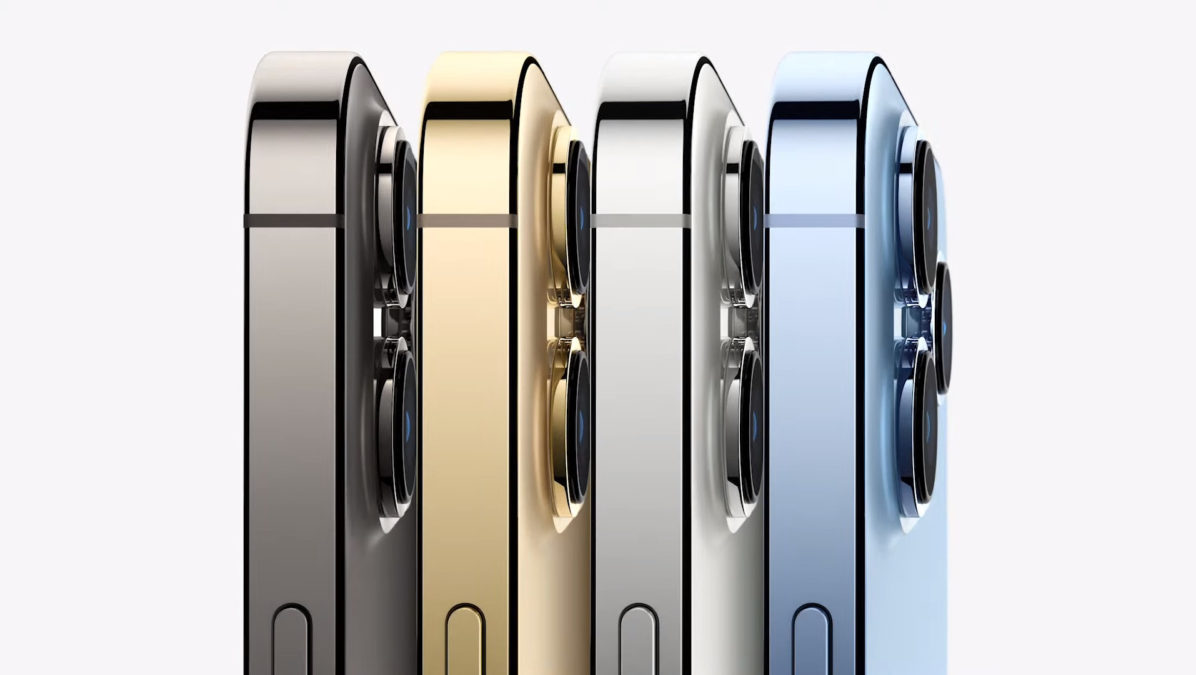
Apple just took the wraps off its 2021 flagships, comprising of four smartphones once again. Ranging from the Mini to the Pro Max, the iPhone 13 series appears to be an iterative update.
But how does it stack up against Samsung’s Galaxy S21 lineup? Let’s find out in this Samsung Galaxy S21 vs iPhone 13 series comparison, in which we take a closer look at everything from specs and features to pricing and design. Let’s dive in!
Samsung Galaxy S21 vs iPhone 13
Design and features
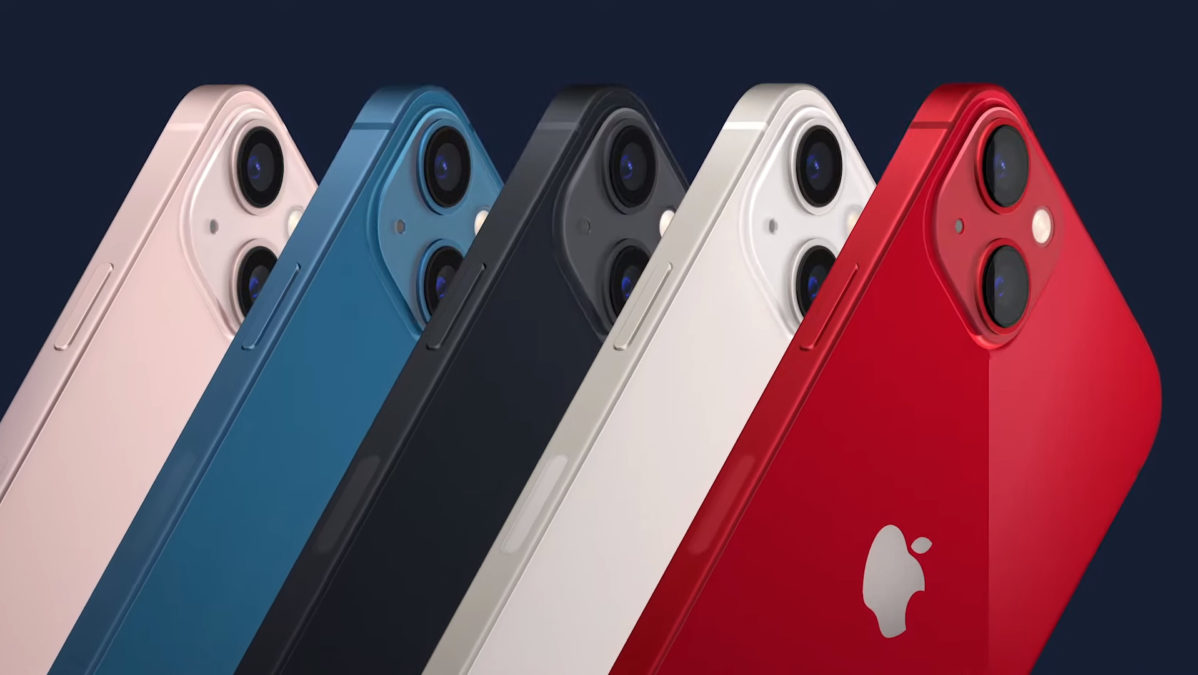
The iPhone 13 and Galaxy S21 series are as feature-packed as ever. The Galaxy S21 Ultra and iPhone 13 Pro Max take the crown as the phones to beat. However, the rest of the handsets in the two lineups are impressive as well.
The iPhone 13 series remains largely unchanged on the surface, apart from a smaller notch. All four keep the same display sizes and overall footprint, and the better cameras are reserved for the Pro models. This time around, the iPhone 13 Pro and Pro Max get another leg up with 120Hz displays that will provide a smoother experience compared to the 60Hz panels found on the iPhone 13 and 13 Mini.
Related: The best Samsung Galaxy S21 cases you can buy
It was a pretty significant design overhaul in the case of the Galaxy S21, though. Samsung replaced the unsightly camera bump from the Galaxy S20 with a “contour cut” camera bump that integrates directly into the metal frame. The Galaxy S21 range features 120Hz display refresh rates as well. However, Samsung dropped the resolution of the standard Galaxy S21 and Galaxy S21 Plus to Full HD+ while keeping the S21 Ultra at QHD+.

As far as specs go, you’ll get flagship performance no matter which phone you pick. The latest Apple chip, the A15 Bionic, could very well be the fastest smartphone processor around, so it will likely beat the Snapdragon 888-toting Galaxy S21 in performance benchmarks — although we haven’t tested this out yet. However, you won’t see a noticeable difference in real-world usage. All seven phones can comfortably handle anything you throw at them.
You’ll get flagship performance no matter which phone you pick.
The biggest selling point of Apple and Samsung flagships is usually the camera. These phones are consistently part of the best phone camera roundups year after year, and 2021 is no different.
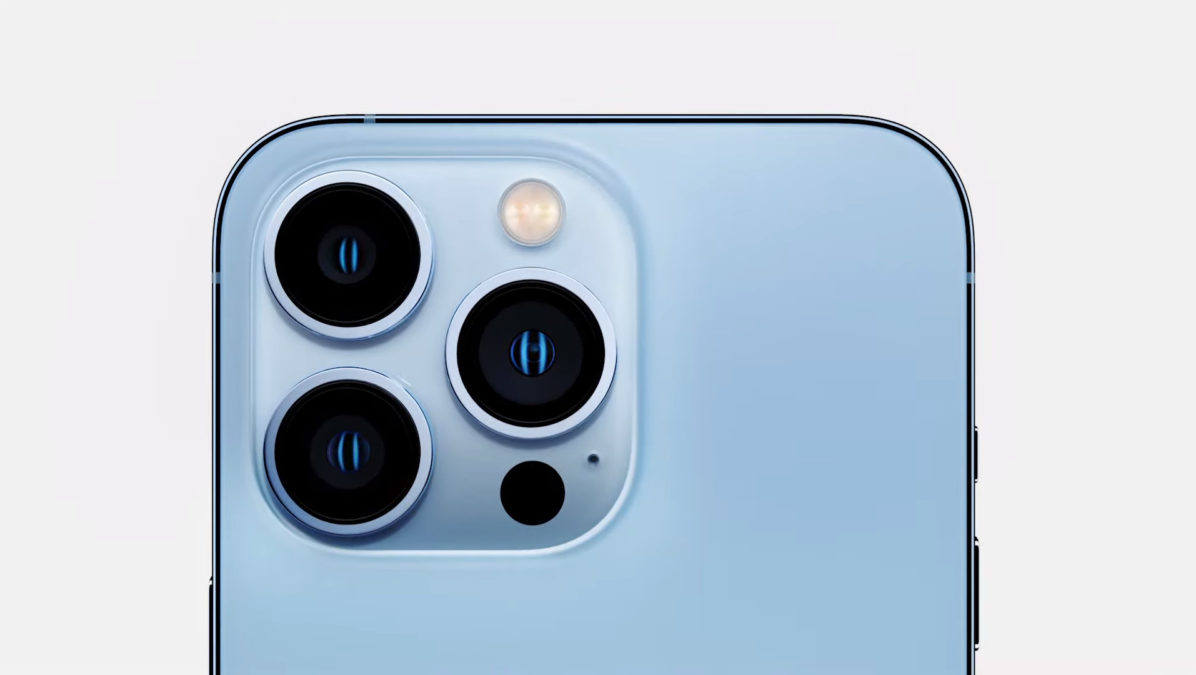
You’ll get multiple camera lenses with every phone. The iPhone 13 series retains a lot of camera features from the last generation. The dual cameras of the iPhone 13 and iPhone 13 Mini are entirely unchanged. There’s only an aesthetic difference this time around, with the cameras placed diagonally. The cameras were excellent performers, so you can expect the same once again.
See also: The best camera phones you can get
As before, the Pro editions add a telephoto lens to the mix. While the specs sheet stays the same in the case of the iPhone 13 Pro and Pro Max, the ultra-wide camera has been upgraded from an ƒ/2.4 aperture to ƒ/1.8, which should make it perform better in low light. There are also new features on the software side. A new Cinematic Mode brings bokeh to video, and you’ll now get Night Mode on all the lenses, not just the main one.
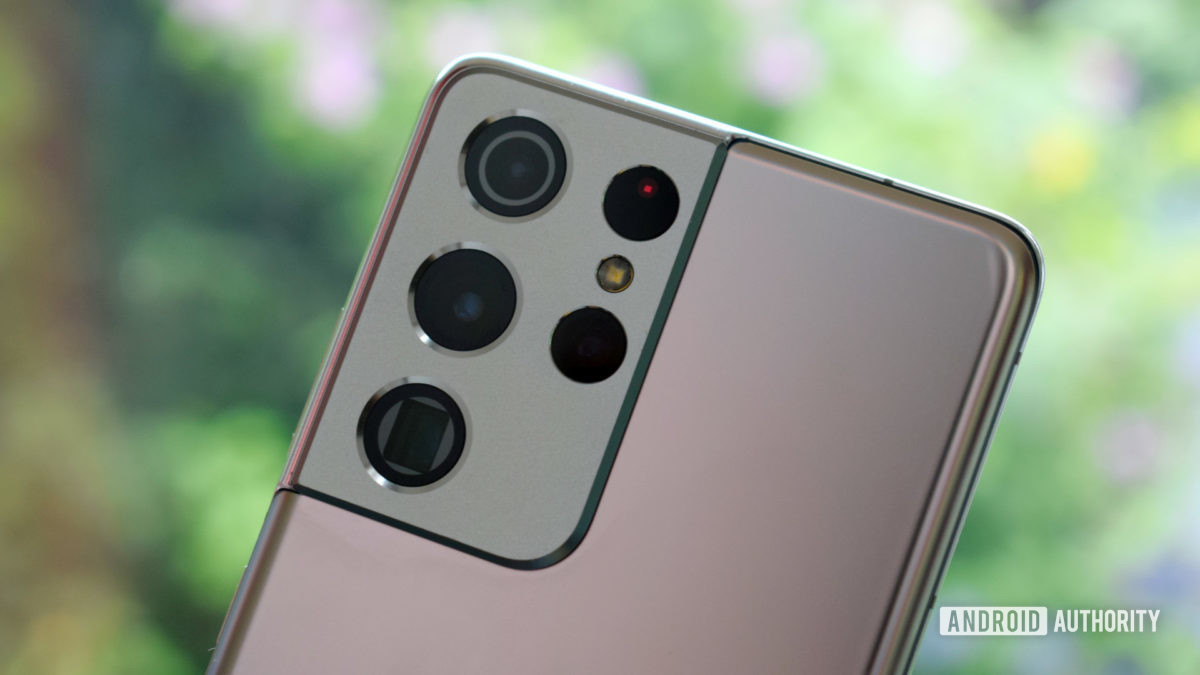
The Galaxy S21 and S21 Plus also have 12MP wide-angle and ultra-wide sensors, along with a 64MP telephoto shooter. However, if you want even more cameras, the Galaxy S21 Ultra is the phone to get. It comes with a 108MP wide-angle, two 12MP telephoto units, and a 12MP ultra-wide shooter.
We know that the Galaxy S21 series cameras are excellent, and we can expect the same from the iPhone 13 range. It’ll be exciting to see how the phones, the S21 Ultra and iPhone 13 Pro Max in particular, will fare against each other in our camera shootout that’s coming soon.
Price
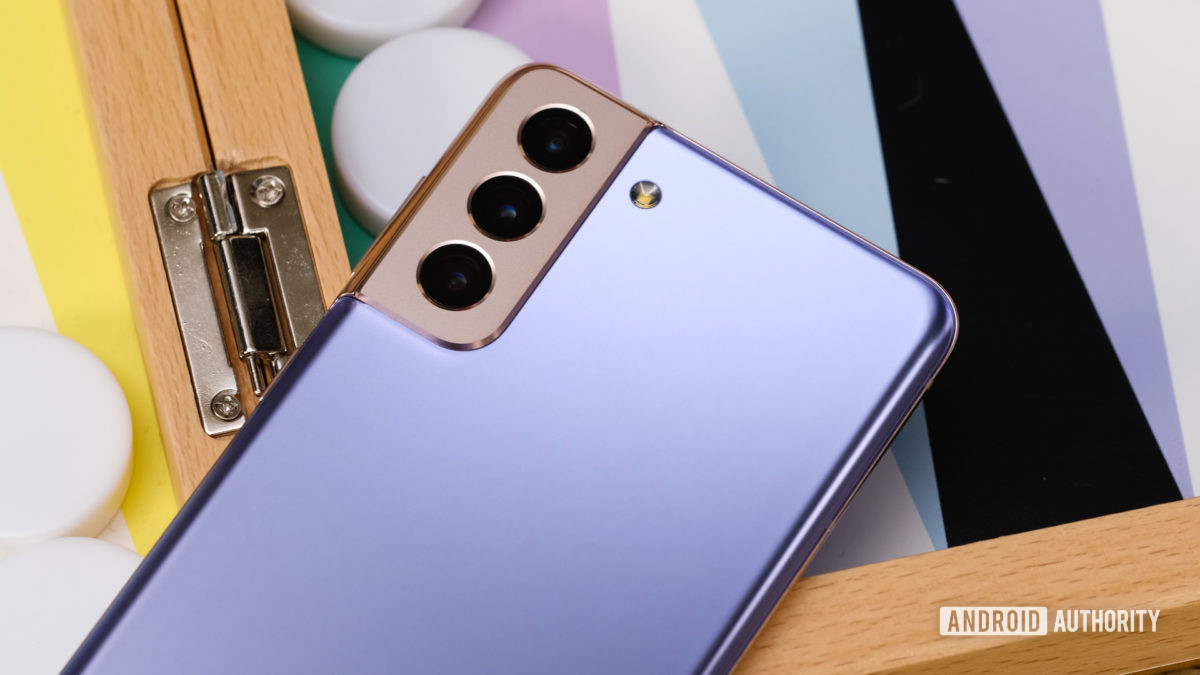
- Galaxy S21: $799 / €849 / £769
- S21 Plus: $999 / €1,049 / £949
- S21 Ultra: $1,199 / €1,249 / £1,149
- iPhone 13 Mini: $699 / €799 / £679
- iPhone 13: $799 / €899 / £779
- iPhone 13 Pro: $999 / €1,149 / £949
- iPhone 13 Pro Max: $1,099 / €1,249 / £1,049
Apple didn’t change the starting prices of the iPhone 13 series. However, it’s worth noting that it dropped the 64GB option in favor of 128GB. So every base-level iPhone 13 comes with double the storage compared to the previous generation. You can also bump the storage up to 1TB with the iPhone 13 Pro and Pro Max.
With the Galaxy S21, Samsung took a huge step back from the exorbitant pricing of the Galaxy S20 series. Each phone starts at $200 lower than the previous generation and is more in line with competing devices like the iPhone 13.
The Galaxy S21 Ultra is more expensive than the iPhone 13 Pro Max.
The Galaxy S21 Ultra, at $1,199, is a little more expensive than the iPhone 13 Pro Max. You get a different camera setup, a higher display resolution, and S Pen support to make that difference more palatable.
The identically-priced iPhone 13 Pro and Galaxy S21 Plus are about as even as it gets. The regular iPhone 13 and Galaxy S21 are also priced the same. However, an argument could be made for the more premium build quality of the former, giving it a leg up over the “glasstic” Samsung phone. On the flip side, the Galaxy S21 comes with a higher display refresh rate, which is something you’ll only get with the Pro iPhones.
There’s no Samsung equivalent for the iPhone 13 Mini. If you want a small phone, the Mini is the best option around, and it helps that it’s the cheapest of the lot.
Specs
| iPhone 13 Mini | iPhone 13 | |
|---|---|---|
| Display | 5.4-inch Super Retina XDR OLED 2,340 x 1,080 resolution HDR, True Tone Wide color (P3) 2,000,000:1 contrast ratio 800 nits max brightness (typical); 1200 nits max brightness (HDR) Ceramic Shield front |
6.1-inch Super Retina XDR OLED 2,532 x 1,170 resolution HDR, True Tone Wide color (P3) 2,000,000:1 contrast ratio 800 nits max brightness (typical); 1200 nits max brightness (HDR) Ceramic Shield front |
| Processor | Apple A15 Bionic | Apple A15 Bionic |
| Storage | 128 / 256 / 512GB | 128 / 256 / 512GB |
| Battery | Qi wireless charging up to 7.5W Up to 50% charge in around 30 minutes with 20W adapter or higher (sold separately) MagSafe: |
Qi wireless charging up to 7.5W Up to 50% charge in around 30 minutes with 20W adapter or higher (sold separately) MagSafe: |
| Cameras | Rear: -Wide-angle 12MP, ƒ/1.6, OIS, 7-element lens -Ultra-wide 12MP, ƒ/2.4, 120° field of view, 5-element lens, lens correction 2x optical zoom out, digital zoom up to 5x, Night Mode, Deep Fusion, Smart HDR 3 Video: Front: Night Mode, Deep Fusion, Smart HDR 3 |
Rear: -Wide-angle 12MP, ƒ/1.6, OIS, 7-element lens -Ultra-wide 12MP, ƒ/2.4, 120° field of view, 5-element lens, lens correction 2x optical zoom out, digital zoom up to 5x, Night Mode, Deep Fusion, Smart HDR 3 Video: Front: Night Mode, Deep Fusion, Smart HDR 3 |
| Connectivity | 5G (sub‑6GHz and mmWave) Gigabit LTE with 4×4 MIMO and LAA Wi‑Fi 6 (802.11ax) with 2×2 MIMO Bluetooth 5 Ultra Wideband chip for spatial awareness NFC Express Cards with power reserve GPS, GLONASS, Galileo, QZSS, and BeiDou Digital compass Wi‑Fi Cellular iBeacon microlocation |
5G (sub‑6GHz and mmWave) Gigabit LTE with 4×4 MIMO and LAA Wi‑Fi 6 (802.11ax) with 2×2 MIMO Bluetooth 5 Ultra Wideband chip for spatial awareness NFC Express Cards with power reserve GPS, GLONASS, Galileo, QZSS, and BeiDou Digital compass Wi‑Fi Cellular iBeacon microlocation |
| Sensors | Face ID Barometer Three‑axis gyro Accelerometer Proximity sensor Ambient light sensor |
Face ID Barometer Three‑axis gyro Accelerometer Proximity sensor Ambient light sensor |
| Software | iOS 15 | iOS 15 |
| Durability | IP68 | IP68 |
| Dimensions and weight | 131.5 x 64.2 x 7.65mm 141g |
146.7 x 71.5 x 7.65mm 174g |
| Colors | Pink, Blue, Midnight, Starlight, and Product Red | Pink, Blue, Midnight, Starlight, and Product Red |
| In the box | iPhone USB‑C to Lightning cable Documentation |
iPhone USB‑C to Lightning cable Documentation |
| iPhone 13 Pro | iPhone 13 Pro Max | |
|---|---|---|
| Display | 6.1-inch Super Retina XDR OLED 2,532 x 1,170 resolution ProMotion 120Hz HDR, True Tone Wide color (P3) 2,000,000:1 contrast ratio 1,000 nits max brightness (typical); 1200 nits max brightness (HDR) Ceramic Shield front |
6.7-inch Super Retina XDR OLED 2,778 x 1,284 resolution ProMotion 120Hz HDR, True Tone Wide color (P3) 2,000,000:1 contrast ratio 1,000 nits max brightness (typical); 1200 nits max brightness (HDR) Ceramic Shield front |
| Processor | Apple A15 Bionic | Apple A15 Bionic |
| Storage | 128 / 256 / 512GB and 1TB | 128 / 256 / 512GB and 1TB |
| Battery | Qi wireless charging up to 7.5W Up to 50% charge in around 30 minutes with 20W adapter or higher (sold separately) MagSafe: |
Qi wireless charging up to 7.5W Up to 50% charge in around 30 minutes with 20W adapter or higher (sold separately) MagSafe: |
| Cameras | Rear: -Wide-angle 12MP, ƒ/1.5, dual OIS, 7-element lens, 100% Focus Pixels, Night Mode -Ultra-wide 12MP, ƒ/1.8, 120° field of view, 5-element lens, lens correction, Night Mode -Telephoto 12MP, ƒ/2.8, dual OIS, 6-element lens 3x optical zoom in, 2x optical zoom out, 6x optical zoom range, digital zoom up to 15x, Deep Fusion, Smart HDR 3, Apple ProRAW Video: Front: Night Mode, Deep Fusion, Smart HDR 3 |
Rear: -Wide-angle 12MP, ƒ/1.5, dual OIS, 7-element lens, 100% Focus Pixels, Night Mode -Ultra-wide 12MP, ƒ/1.8, 120° field of view, 5-element lens, lens correction, Night Mode -Telephoto 12MP, ƒ/2.8, dual OIS, 6-element lens 3x optical zoom in, 2x optical zoom out, 6x optical zoom range, digital zoom up to 15x, Deep Fusion, Smart HDR 3, Apple ProRAW Video: Front: Night Mode, Deep Fusion, Smart HDR 3 |
| Connectivity | 5G (sub‑6GHz and mmWave) Gigabit LTE with 4×4 MIMO and LAA Wi‑Fi 6 (802.11ax) with 2×2 MIMO Bluetooth 5 Ultra Wideband chip for spatial awareness NFC Express Cards with power reserve GPS, GLONASS, Galileo, QZSS, and BeiDou Digital compass Wi‑Fi Cellular iBeacon microlocation |
5G (sub‑6GHz and mmWave) Gigabit LTE with 4×4 MIMO and LAA Wi‑Fi 6 (802.11ax) with 2×2 MIMO Bluetooth 5 Ultra Wideband chip for spatial awareness NFC Express Cards with power reserve GPS, GLONASS, Galileo, QZSS, and BeiDou Digital compass Wi‑Fi Cellular iBeacon microlocation |
| Sensors | Face ID LiDAR Scanner Barometer Three‑axis gyro Accelerometer Proximity sensor Ambient light sensor |
Face ID LiDAR Scanner Barometer Three‑axis gyro Accelerometer Proximity sensor Ambient light sensor |
| Software | iOS 15 | iOS 15 |
| Durability | IP68 | IP68 |
| Dimensions and weight | 146.7 x 71.5 x 7.65mm 204g |
160.8 x 78.1 x 7.65mm 240g |
| Colors | Graphite, Gold, Silver, and Sierra Blue | Graphite, Gold, Silver, and Sierra Blue |
| In the box | iPhone USB‑C to Lightning cable Documentation |
iPhone USB‑C to Lightning cable Documentation |
| Samsung Galaxy S21 | Samsung Galaxy S21 Plus | Samsung Galaxy S21 Ultra | |
|---|---|---|---|
| Display | 6.2-inch Dynamic AMOLED Flat FHD+ 2,400 x 1,080 at 421ppi Adaptive 120Hz refresh rate HDR10+ certified |
6.7-inch Dynamic AMOLED Flat FHD+ 2,400 x 1,080 at 394ppi Adaptive 120Hz refresh rate HDR10+ certified |
6.8-inch Dynamic AMOLED Curved WQHD+ 3,200 x 1,440 at 515ppi Adaptive 120Hz refresh rate HDR10+ certified |
| Processor | Qualcomm Snapdragon 888 or Samsung Exynos 2100 | Qualcomm Snapdragon 888 or Samsung Exynos 2100 | Qualcomm Snapdragon 888 or Samsung Exynos 2100 |
| RAM | 8GB | 8GB | 12 or 16GB |
| Storage | 128 or 256GB | 128 or 256GB | 128, 256, or 512GB |
| MicroSD | No | No | No |
| Battery | 4,000mAh Fast wired and wireless charging Reverse wireless charging |
4,800mAh Fast wired and wireless charging Reverse wireless charging |
5,000mAh Fast wired and wireless charging Reverse wireless charging |
| Cameras | Rear: – Wide-angle: 12MP, ƒ/1.8, 1.8µm with OIS and dual-pixel AF – Telephoto: 64MP, ƒ/2.0, 0.8µm with OIS and phase-detection AF – Ultra-wide: 12MP, ƒ/2.2, 1.4µm with 120-degree FoV 3x hybrid optical/digital zoom Front: |
Rear: – Wide-angle: 12MP, ƒ/1.8, 1.8µm with OIS and dual-pixel AF – Telephoto: 64MP, ƒ/2.0, 0.8µm with OIS and phase-detection AF – Ultra-wide: 12MP, ƒ/2.2, 1.4µm with 120-degree FoV 3x hybrid optical/digital zoom Front: |
Rear: – Wide-angle: 108MP, ƒ/1.8, 0.8µm with OIS and phase-detection AF – Telephoto: 10MP, ƒ/2.4, 1.22µm with OIS, dual-pixel AF, and 3x optical zoom – Telephoto: 10MP, ƒ/4.9, 1.22µm with OIS, dual-pixel AF, and 10x optical zoom – Ultra-wide: 12MP, ƒ/2.2, 1.4µm with dual-pixel AF and a 120-degree FoV – Laser AF sensor 10x optical zoom Front: |
| Connectivity | 4G LTE support 5G (sub-6GHz, SA and NSA, mmWave) Wi-Fi 6E support Bluetooth 5.0 |
4G LTE support 5G (sub-6GHz, SA and NSA, mmWave) Wi-Fi 6E support Bluetooth 5.0 |
4G LTE support 5G (sub-6GHz, SA and NSA, mmWave) Wi-Fi 6E support Bluetooth 5.2 |
| S Pen support | No | No | Yes |
| Operating System | One UI 3.1 Android 11 |
One UI 3.1 Android 11 |
One UI 3.1 Android 11 |
| Water resistance | IP68 | IP68 | IP68 |
| Security | Ultrasonic fingerprint sensor, face unlock | Ultrasonic fingerprint sensor, face unlock | Ultrasonic fingerprint sensor, face unlock |
| Color | 128GB in Phantom Violet, Phantom Gray, Phantom Pink, and Phantom White
256GB only in Phantom Gray Future colors: Phantom Gold and Phantom Red |
128GB in Phantom Violet, Phantom Silver, and Phantom Black
256GB only in Phantom Black Future colors: Phantom Gold and Phantom Red |
128 GB in Phantom Silver and Phantom Black
256 and 512GB in Phantom Black Future colors: Phantom Titanium, Phantom Navy, and Phantom Brown |
| Dimensions and weight | 71.2 x 151.7 x 7.9mm 171g |
75.6 x 161.5 x 7.8mm 202g |
75.6 x 165.1 x 8.9mm 229g |
Samsung Galaxy S21 vs iPhone 13: Which should you buy?

It’s usually easy to declare a winner when we compare phones, at least in a few categories, but it’s never simple when it comes to Apple vs Samsung. As always, it essentially boils down to which ecosystem you are already invested in. You’ll get excellent performance with all seven phones, and the cameras are fantastic as well.
Read also: How to switch from iPhone to Android
The feature set is ultimately quite similar, even if the wrapping is entirely different. Neither side does anything that would convince someone to jump across the fence. The Galaxy S21 Ultra’s S Pen support is unique in this lineup. However, an iPhone user who wasn’t swayed by the Galaxy Note won’t find that a compelling reason this time either.
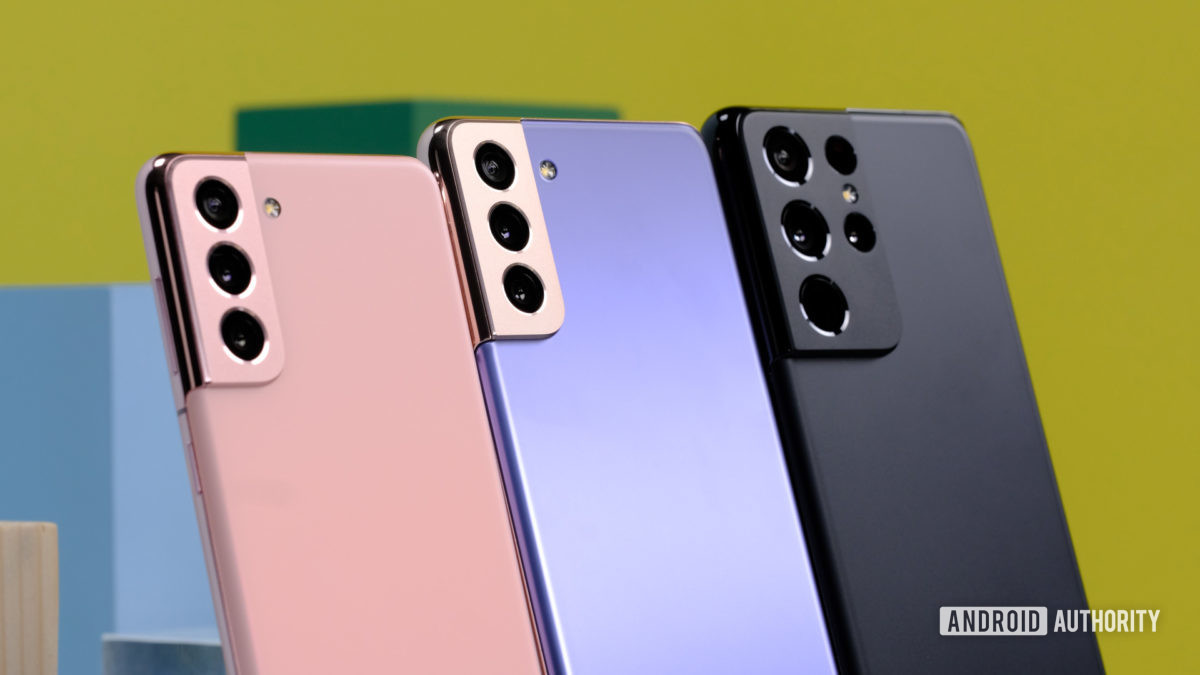
For the undecided, it depends on what you’re looking for. The Galaxy S21 and S21 Plus feature larger screens than their iPhone 13 series counterparts. The S21 has a better camera setup on paper and a higher display refresh rate than the standard iPhone 13, but the latter has a more premium build. For the best flagships out there, it’s neck and neck between the S21 Ultra and the iPhone 13 Pro Max.
It’s also worth mentioning that Pro versions of the iPhones come with as much as 1TB of storage, while the S21 Ultra tops out at 512GB. The iPhones also feature Apple’s Face ID technology, which some prefer over the in-display fingerprint scanners found on the S21 devices. But on the other hand, you get slightly faster wired charging with Samsung’s flagships (25W vs 20W) and an arguably nicer design thanks to a smaller display cutout, among other things.
If you’re looking for a compact phone, the iPhone 13 Mini is right up your alley.
The phone that makes an excellent case for itself, though, is the iPhone 13 Mini. If you’re looking for a small phone, its closest competition in the size category is 2020’s Pixel 4a or the Asus Zenfone 8.
Both Android and iOS are fully mature platforms at this point, and Samsung’s flagships are among the best around. If you are considering a switch, these are two series to jump between.
That’s it for our Samsung Galaxy S21 vs iPhone 13 comparison! Which one are you considering?